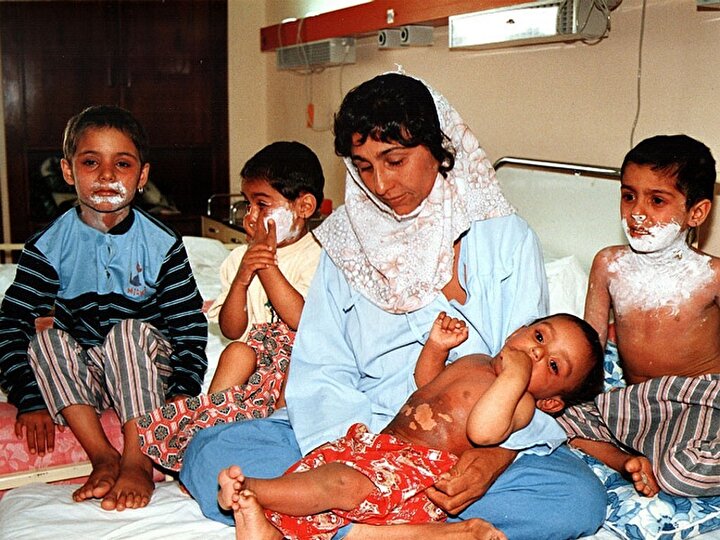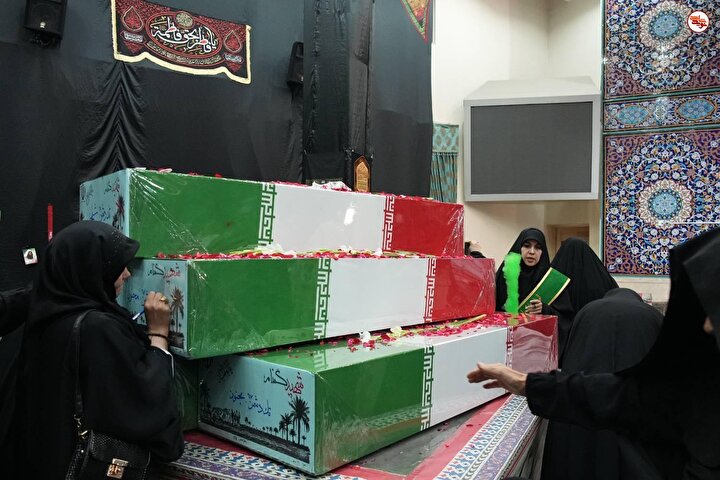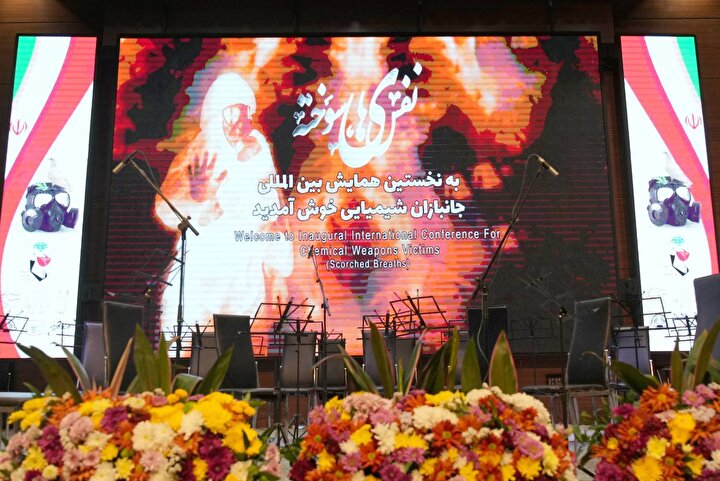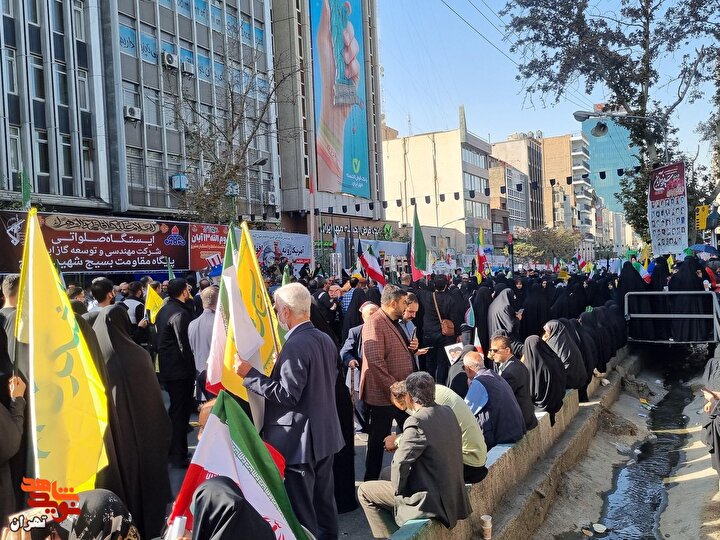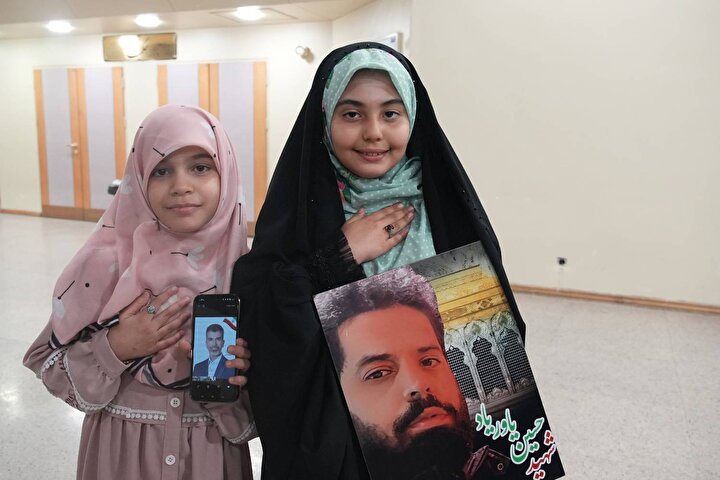
Martyr Ayatollah Qaffari
Navideshahed- Martyr Qaffari had a determinative and great role in illustrating and informing Iranian Muslims and the victory of the revolution is indebted to the fighting of great men like him who did not keep silent about the tyranny of the time.

Hossein Qaffari Azarshahri was born in 1295 Shamsi (1916) in a farmer family. Soon he lost his father and was grown up under his older brother’s custody. He passed his primary education in Azarshahr village and then dispatched to Tabriz with his brother’s accompany. There he went to Tabriz seminary. After his returning to Azarshahr, he continued his studying with his uncle.
Finally after 30 years gaining religious education, in 1324 Sh. (1945) he went to Qom and benefited from great clergymen like Ayatollahs Broujerdi, Feiz-e-Qomi and Ayatollah Mohammad Taqi Khansari. 11 years later, he left Qom for Tehran and started preaching Islamic and Shiite principles.
In 1340 (1961), when Hasan Ali Mansour (The then Prime Minister) laid the six fold drafts (These drafts seemed to be on behalf of farmers but they actually were for seizing their farms and orchards), Ayatollah Qaffari tried to prevent its approbation.
In 1341 Sh. (1962), while clergymen’s crusades were at its climax under the leadership of Imam Khomeini, Ayatollah Qaffari held meetings and speeches to reveal the then regime’s crimes.
In Moharam 1342, simultaneous with the bloody rise of 15 Khordad 1342 (5 June 1963) (On this day people in Tehran, Varamion, and Qom objected Imam Khomeini’s arresting by government and attacks to Qom Seminary. The soldiers were ordered to shoot at people and martyred many of them), he revealed what had happened on this day. On 12 Moharam 42 (4 June 1963), returning from one of his meetings, the regime’s officials arrested him. On that night, many clergymen were arrested in Tehran and other cities. By seizing more than 80 clergymen, the government aimed to stop people’s crusades.
Ayatollah Qaffari was investigated and racked in prison. After his releasing, he went in opposing regime till Savak (The intelligence center before revolution) arrested him again. But they had to release him after they found no evidence against him.
During 1350-53 (1971-74), he used to have a new form of crusades. In Tir 1353, he was seized in Tehran which was his last imprisonment. Savak tortured him to death and broke his teeth and hands.
His son told about his last visit with father:
“Father was dragged to visiting room. His hands and feet were broken and hadn’t more than one or two teeth in his mouth. We didn’t exchange more than a few sentences.
He said: I don’t think we see each other anymore.
He talked about Imam Musa Kazim (PBUH) (The seventh Imam of Shiite who had to pass most of his life in prison because the king was afraid of him and his followers) and because he couldn’t clear his teardrops –which he preserved just for God- with his broken hands, took his head down and cleared them with broken knees. I left there with objection. The next day we heard that at 2 o’clock (7 Day 1353 i.e. 28 December 1974) he released from those tortures and martyred.”?
Martyr Qaffari’s martyrdom in Shah Prison brought up a great wave of protest inside and outside the country and inflamed the fighting against Shah’s cruel regime.
Undoubtedly, Martyr Qaffari had a determinative and great role in illustrating and informing Iranian Muslims and the victory of the revolution is indebted to the fighting of great men like him who did not keep silent about the tyranny of the time.
His memory be glorified and his way be followed by all.
Hossein Qaffari Azarshahri was born in 1295 Shamsi (1916) in a farmer family. Soon he lost his father and was grown up under his older brother’s custody. He passed his primary education in Azarshahr village and then dispatched to Tabriz with his brother’s accompany. There he went to Tabriz seminary. After his returning to Azarshahr, he continued his studying with his uncle. Finally after 30 years gaining religious education, in 1324 Sh. (1945) he went to Qom and benefited from great clergymen like Ayatollahs Broujerdi, Feiz-e-Qomi and Ayatollah Mohammad Taqi Khansari. 11 years later, he left Qom for Tehran and started preaching Islamic and Shiite principles. In 1340 (1961), when Hasan Ali Mansour (The then Prime Minister) laid the six fold drafts (These drafts seemed to be on behalf of farmers but they actually were for seizing their farms and orchards), Ayatollah Qaffari tried to prevent its approbation. In 1341 Sh. (1962), while clergymen’s crusades were at its climax under the leadership of Imam Khomeini, Ayatollah Qaffari held meetings and speeches to reveal the then regime’s crimes. In Moharam 1342, simultaneous with the bloody rise of 15 Khordad 1342 (5 June 1963) (On this day people in Tehran, Varamion, and Qom objected Imam Khomeini’s arresting by government and attacks to Qom Seminary. The soldiers were ordered to shoot at people and martyred many of them), he revealed what had happened on this day. On 12 Moharam 42 (4 June 1963), returning from one of his meetings, the regime’s officials arrested him. On that night, many clergymen were arrested in Tehran and other cities. By seizing more than 80 clergymen, the government aimed to stop people’s crusades. Ayatollah Qaffari was investigated and racked in prison. After his releasing, he went in opposing regime till Savak (The intelligence center before revolution) arrested him again. But they had to release him after they found no evidence against him. During 1350-53 (1971-74), he used to have a new form of crusades. In Tir 1353, he was seized in Tehran which was his last imprisonment. Savak tortured him to death and broke his teeth and hands. His son told about his last visit with father: “Father was dragged to visiting room. His hands and feet were broken and hadn’t more than one or two teeth in his mouth. We didn’t exchange more than a few sentences. He said: I don’t think we see each other anymore. He talked about Imam Musa Kazim (PBUH) (The seventh Imam of Shiite who had to pass most of his life in prison because the king was afraid of him and his followers) and because he couldn’t clear his teardrops –which he preserved just for God- with his broken hands, took his head down and cleared them with broken knees. I left there with objection. The next day we heard that at 2 o’clock (7 Day 1353 i.e. 28 December 1974) he released from those tortures and martyred.”? Martyr Qaffari’s martyrdom in Shah Prison brought up a great wave of protest inside and outside the country and inflamed the fighting against Shah’s cruel regime. Undoubtedly, Martyr Qaffari had a determinative and great role in illustrating and informing Iranian Muslims and the victory of the revolution is indebted to the fighting of great men like him who did not keep silent about the tyranny of the time. His memory be glorified and his way be followed by all.
